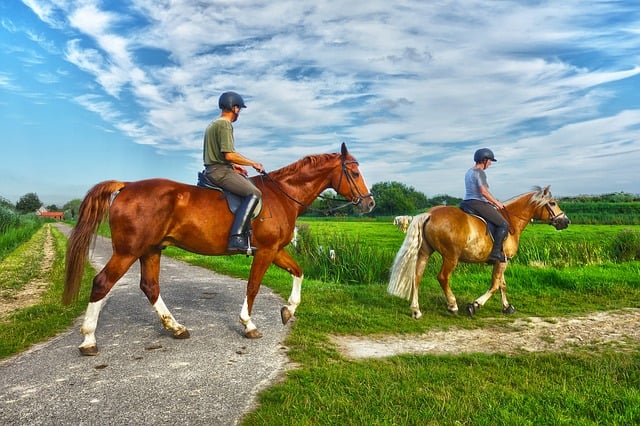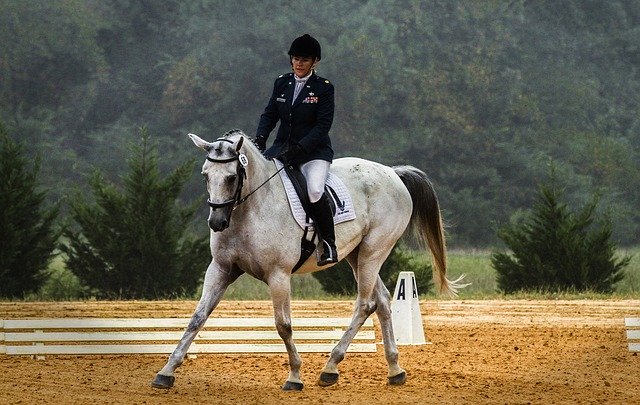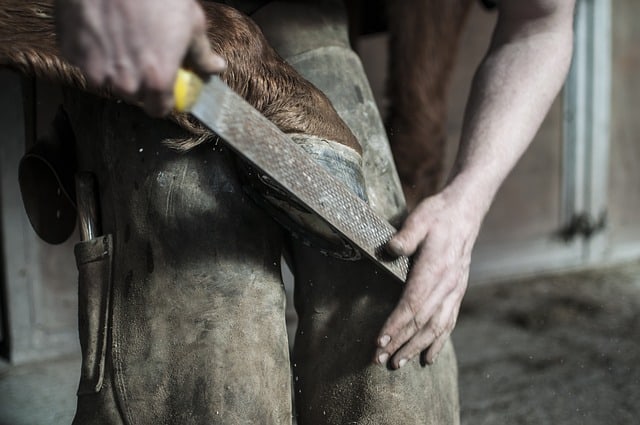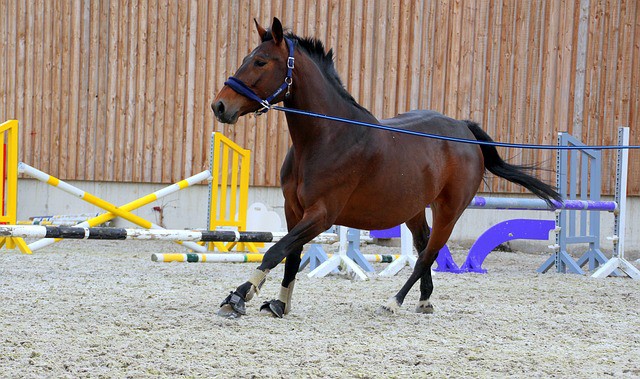We have all been there, you are riding along with your horse, perhaps enjoying a nice leisurely stroll through the forest, or in the fields, when suddenly your horse stumbles and almost falls. Stumbling can happen with any horse, and it can be caused by a variety of reasons, but if your horse is stumbling on a regular basis you could have a bigger problem, which may result in an injury to both you and your horse.

Normal Foot Fall of the Horse.
The normal foot placement of the horse during movement is heel then toe. Once the foot is firmly placed on the ground the weight is then transferred on to the limb, to allow the next limb placements. When stumbling occurs, the horse’s toe catches the ground and causes the animal to stumble. Let’s explore some of the common causes of stumbling and how they can be tackled.
Contributing Factors to Stumbling in Horses.
The Terrain
Very rocky ground, uneven or heavy ground can cause stumbling, if this is the problem you will find that the horse is fine when in the arena or on normal footing.
The Young Horse.

Young horse’s may often trip and stumble as they are learning to develop their balance. Horses naturally take about 60% of their weight through their forelimbs, this coupled with learning new balance with a rider onboard can lead to stumbling. Also with young horses, fatigue can be a factor, so the rider should be careful not to overwork them and take frequent breaks during training.
Solution: with young horses it is important to do plenty of slow work with lots of transitions, up and down through the paces; this enables the horse to develop correct balance with the rider on board. Plenty of breaks on a long rein will help prevent fatigue as will keeping the training sessions in line with the level of fitness the horse is currently at.
The Nosey or Inattentive Horse
Some horses are naturally nosey or inattentive, they are too busy looking around them and not worrying about where their feet are, which can lead to stumbling. My first horse was very similar to this, she was always marching somewhere, nosey, looking around her, and this would often cause her to stumble when out hacking.
Solution; if you have an inattentive horse, the best thing to do is to keep him focused in his work, varied work routines, plenty of transitions and lateral work etc when in the arena. While out hacking, vary your root, and use some simple schooling during hacking or road work to keep his attention, such as shoulder-in, shoulder fore or leg yield.
Poor Hoof Balance

It is vitally important to your horse to ensure that his feet are kept well balanced. If the horse has over long toes, this can lead to stumbling, as the break over point for the limb in movement is altered making it harder for the Horse to get his toe out of the way leading him to stumble.
Solution; if you believe you horses foot balance is the cause of your horse’s stumbling, have a chat with your farrier, and perhaps schedule the visits closer together to counteract the problem. Occasionally the farrier may recommend using something like a natural balance shoe along with corrective trimming and balancing the feet.
Confirmation as a Cause of Stumbling
Conformation can be a cause of stumbling, a horse that is built downhill, i.e. his croup is higher than his withers can struggle with balance issues, and therefore stumble.
Solution If your horse is built like this you can improve his balance through correct training, plenty of transitions etc, which should improve the situation.
Pain As a Cause of Stumbling
Pain is a very big cause of stumbling in horses. Sore Heels, Stone Bruise, Navicular Syndrome can all cause stumbling, as the horse while trying to avoid the area of pain, will move placing their toe before heel, which will in turn lead to them catching their toe and stumbling.
Pain can also be due to an accident or trauma; such as a competition horse that has had a fall out cross country, or perhaps a horse that has had a fall in the field or has been cast. Soft Tissue Trauma due to such an incident can lead to inflexibility and restrictions in the horse’s musculoskeletal structure, leading to pain and stumbling.
Solution; Identify the cause of the pain, work closely with your vet and farrier, for Navicular Syndrome and foot related issues. Corrective Trimming and Shoeing can really help alleviate many stumbling issues, and there is medication to help with problems such as Navicular. If the stumbling problem relates to pain due to inflexibility following trauma, regular Chiropractic and Sports Massage for your horse, will help to keep him, comfortable, flexible and happy in his work.
Neurological Conditions As a Cause of Stumbling
With Neurological conditions, the signals from the horse’s brain, do not reach his limbs correctly or are interrupted. Neurological conditions can be mechanical such as Wobbler Syndrome, Spinal Stenosis, or nerve impingement due to injury. Or they can be due infections, caused by parasites as with Equine Protozoal Myeloencepalitis, Tick bites as with Lyme Disease, or Ear Infections.
If Your Horse has just begun to stumble and you are unsure of the cause; Call Your Vet As Soon As Possible, to eliminate any type of infection.
Solution; The main thing to do is if your horse has just begun stumbling, and you are unsure of the cause; call your vet as soon as possible, to eliminate any type of infection. Wobbler Syndrome due to a either a wedge vertebra or spinal stenosis is usually picked up at an early age, but if a horse has managed to slip through the net, it would have a history of stumbling. Injury to the neck can occur due to falls cross country or racing. If you horse has sustained a bad fall, a thorough veterinary examination should be top of the list.
Poor Training
Stumbling can be a result of poor training of the horse, i.e. the horse being allowed to run on to the forehand, which would make them more likely to lose their balance and stumble.
Solution; The simplest correction for this cause it to use plenty of transitions in your horses work, both upward and downward, training the horse to be more responsive and obedient to your aids. This will encourage the horse to take more of his weight on his hind legs, which will in turn reduce his stumbling.

Lunging can be very beneficial, again using lots of transitions. Trotting poles are also a very useful way of encouraging a lazy or inattentive horse to be more careful with his feet, as they say, it improves your horse’s Hoof, Eye Coordination;-)
Can The Rider Cause Stumbling
Poor Riding can cause stumbling, particularly in a young or green horse. A rider that is too heavy for the horse or a rider that is unbalanced can lead to unbalance and stumbling in the horse.
Solution; If you feel that your riding may be contributing to your horse’s stumbling, take some lessons to help with your balance and position to give you and your horse the best possible chance for success.
In Conclusion
To sum up, there are many reasons for stumbling; the most obvious is of course the feet and the front legs. If you have found that your horse has suddenly begun to stumble, and you think it may be related to his feet, call your farrier as soon as possible. If the farrier can find nothing obvious then call the vet and start with a full lameness exam. If the Lameness exam comes up short, the vet will include a Neurological Assessment if necessary. Early diagnosis of the cause of stumbling followed by the appropriate treatment and after care will minimise the risk of injury to you and your horse.
The article was originally published in the February 2020 Issue of Irish Sport Horse Magazine.
